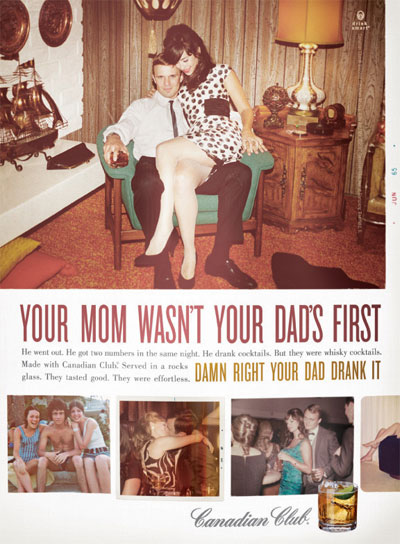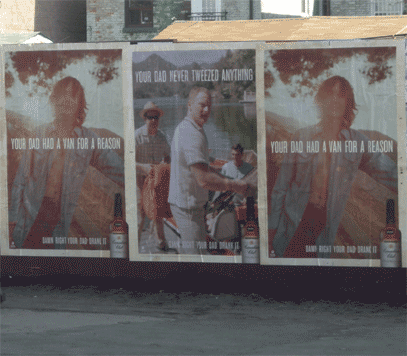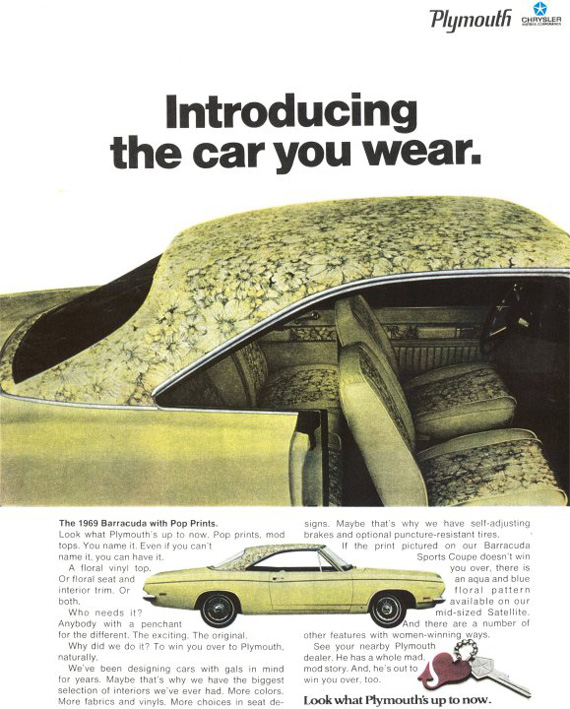Before ADD/ADHD, ritalin was prescribed to tired, overworked mothers. This 1967 ad claimed that ritalin could cure “Tired Mom Syndrome”:
Amazing!
Thanks to my friend, Jake L!
Text: “Back then, you didn’t look through your closet for something to wear. You wore your closet. You’ve come a long way, baby.”
These images are of a beer marketed specifically to women in 1953, Storzette by Storz.
“In 1953 Storz tried to market a new product for women, ‘Storzette.’ Designed to be a beer for the ladies it was supposedly not too bitter and was calorie controlled. it also came in a smaller can, 8 ounces, which Storz called “Queen sized” and it came in four can packs called “Princess Packs.” The brewery noted that market studies showed that many women felt that the standard 12 oz can provided too large a serving. The beer inside was also different, made to be less bitter than standard beers. The can even had a pink orchid pictured on it to help it appeal to women. It’s initial test market results in San Diego seemed positive, but in the end the effort was not successful and Storzette did not last long on the market. As a result, the little can with the orchid is very scarce. Storz also used a slogan on its regular cans for awhile in the 1950s, “the Orchid of Beer” which has to be one of the more unusual beer advertising slogans.”
Text:
YOUR DAD WAS NOT A METROSEXUAL. H didn’t do pilates. Moisturize. Or drink pink cocktails. Your Dad drank whisky cocktails. Made with Canadian Club. Served in a rocks glass. They tasted good. They were effortless. DAMN RIGHT YOUR DAD DRANK IT.
Toph sent in another Canadian Club ad that makes it clear that it’s awesome if your dad was a player:

Text:
Your Mom wasn’t your Dad’s first. He went out. He got two numbers in the same night. He drank cocktails. but they were whisky cocktails. Made with Canadian Club. Served in a rocks glass. They tasted good. They were effortless.
I’m going to use this to talk about the sexual double standard–try to imagine the same ad, but saying “Your dad wasn’t your mom’s first” with pictures of her with several different men. I don’t think the impression would be the same.
Thanks, Toph!
NEW: Outdoor version of “Your Dad had a van for a reason.”

The Dodge La Femme (1955 and 1956):
Here are some pictures of some restored La Femme’s:
Pink rosebud patterned upholstery:
It even came with matching accessories!
An umbrella and raincoat:
A compact:
A coin purse:
I think showing this car would be interesting in comparison with the contemporary marketing of feminine guns (see Gwen’s post here). The guns look surprisingly like the car.
It would also be interesting, I think, to do a discussion about whether and how they market cars to women today. They do, of course, but the ideal femininity has changed and so, therefore, have the cars. Women, though, haven’t changed very much. One of the reasons that the La Femme didn’t sell was because women were, frankly, offended.
NEW (Jan. ’09)! I found this effort to market cars to women from 1969, the “women-winning” Barracuda with “pop prints” and “gals in mind”!

NEW! (Nov. ’09): Tim McC. sent in this trailer for a Volvo concept car specifically for women. It’s really interesting to compare the marketing of a car to women in the 1950s versus today.
Notice that while beauty is still important, today there’s also an emphasis on the car being tough–but not too tough, not brutal.
Tim adds,
YCC has some fairly significant design decisions (some arguably limitations) that seems to imply certain things about the intended market. For example, the car has no hood that can be opened by the owner. Instead, the car must be taken to the shop for engine maintenance and oil changes. The tires are also run-flat, meaning that the tires will continue to work after a flat, again so that the car can be taken to a garage for the tire change. This seems to imply that the company assumes that women are too ignorant or too afraid to fix their own mechanical problems. This also implies that DIY work on engines or really any technological product is a male pursuit. Keeping women from working on engines seems to say that women shouldn’t have to even consider working with technology. It also features automated parallel parking (a feature common on luxury cars, but prominently emphasized in the materials), which may carry sexist undertones å la the “woman driver” stereotype. The drive train is hybrid-electric, which implies that environmentalism is a feminine concept.